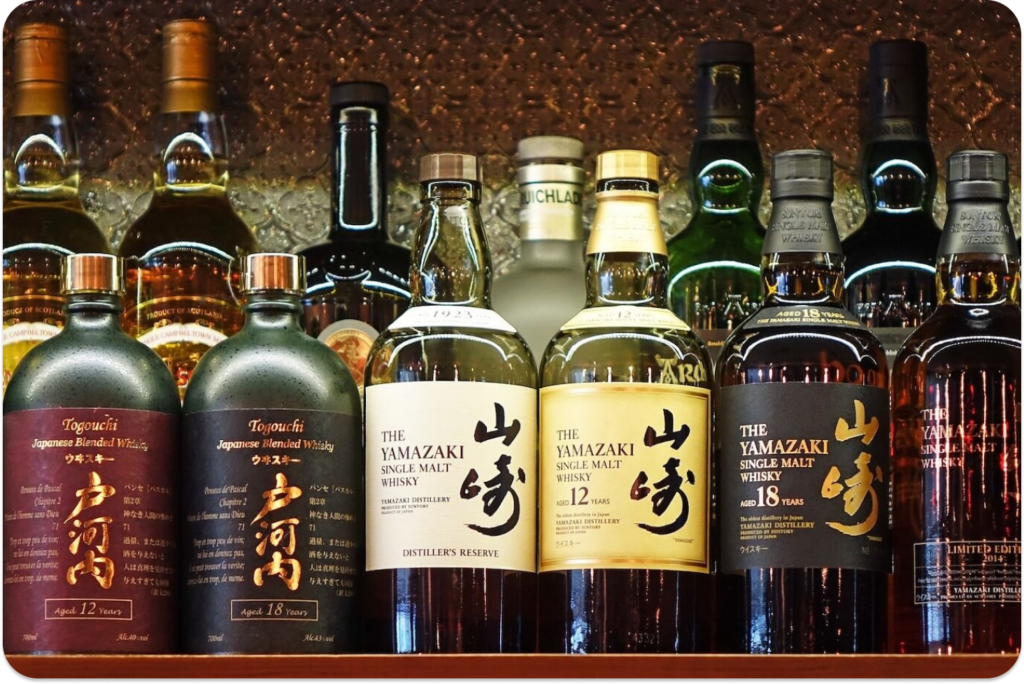
Let’s dive into the world of Japanese Whisky. If you’ve read any of my whisk(e)y reviews, you already know about my deep passion for Japanese whisky. This isn’t just because of my Asian heritage – it’s because Japanese whisky offers a truly unique and compelling quality and taste profile that stands apart in the whisky world.
I’ll be sharing a lot more about Japanese whisky – from detailed reviews of individual expressions to profiles of legendary distilleries and the visionaries behind them. Before jumping into those specifics, I wanted to paint a broader picture of Japanese whisky’s fascinating history and landscape. Consider this post your foundation for the Japanese whisky journey we’ll be taking together.
The Beginning of Japanese Whisky
Japanese whisky production has fascinating origins dating back to the 1870s, but the country’s first true commercial distillery wasn’t established until 1923 – the legendary Yamazaki Distillery. Yes, the very same distillery that produces the renowned Yamazaki whisky we celebrate today was Japan’s pioneering whisky facility, now a biggest portfoliol in Suntory,
What about those pre-1923 Japanese “whiskies”? While my research isn’t absolutely definitive on this point, historical accounts suggest that spirits produced between the 1870s and the establishment of Yamazaki were essentially rough approximations of European whiskies that began arriving after the Meiji Restoration. These early attempts were closer to shochu with whisky coloring – spirits distilled without proper aging or adherence to traditional whisky-making techniques. By today’s standards (or really, by any standards), these would hardly qualify as proper whiskies at all.
The Two Masters of Japanese Whisky
If you want to understand Japanese whisky history, you need to know about two key men: Shinjiro Torii (鳥井 信治郎) and Masataka Taketsuru (竹鶴 政孝). These two figures created what we now know as modern Japanese whisky. Their story became widely known through the popular Japanese drama “Massan,” which told the story of Japanese whisky’s rise to prominence. (Sadaly it’s hard to watch them in English) The tale was so rich and interesting that it was produced as a 150-part series, with each episode running 15 minutes. I’ll share the full details in future posts, but here’s a quick overview to get us started.
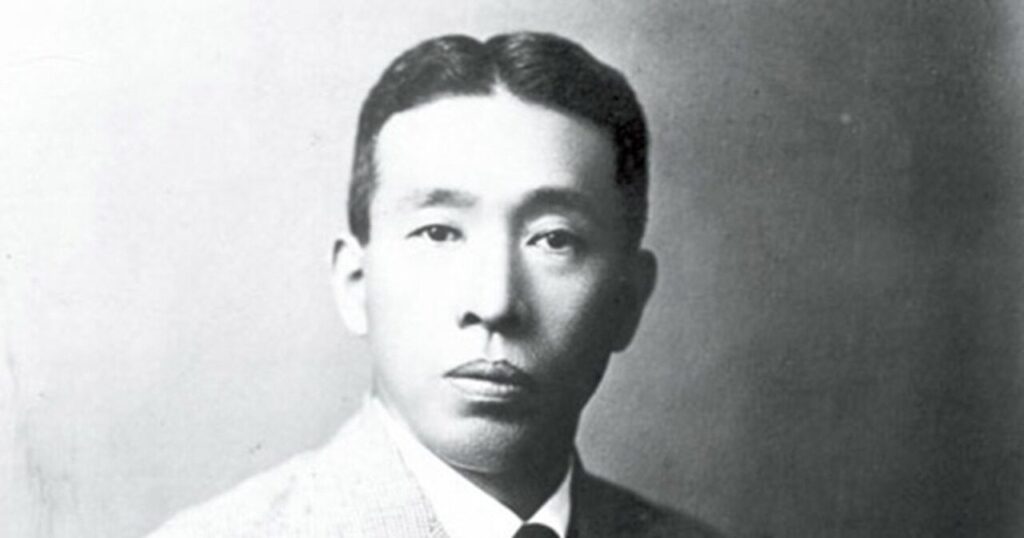
In 1899, Shinjiro Torii founded “Torii Shop” to manufacture, import, and sell wine. He started by importing wine from Spain, but the Japanese public, unfamiliar with wine at the time, often asked, “Why would anyone drink this?” Rather than giving up, Torii embraced this feedback and set a new goal: “to create wine that suits Japanese tastes.” His efforts paid off in 1907 when he developed “Akadama Port Wine” – a sweeter wine based on Portuguese styles that better matched local preferences.
Akadama Port Wine became a massive hit, establishing Torii as a successful businessman. By 1921, he had grown his operation into a corporate entity called “Kotobukiya (壽屋, ことぶきや)” – which would later become “Suntory Holdings,” now one of the biggest names in global spirits. But Torii had bigger dreams. Looking beyond wine, he wanted to produce whisky that would appeal to Japanese tastes. This led him to build the Yamazaki Distillery near Kyoto. His biggest challenge was finding someone who knew how to make whisky and was willing to come to Japan to do it. While looking for experts in Scotland, Torii learned about a Japanese man who had already gone to Scotland, learned whisky-making from start to finish, and returned to Japan. This passionate individual had traveled to Scotland alone, driven by his love for whisky. Torii made him an offer he couldn’t refuse. This man was Masataka Taketsuru.
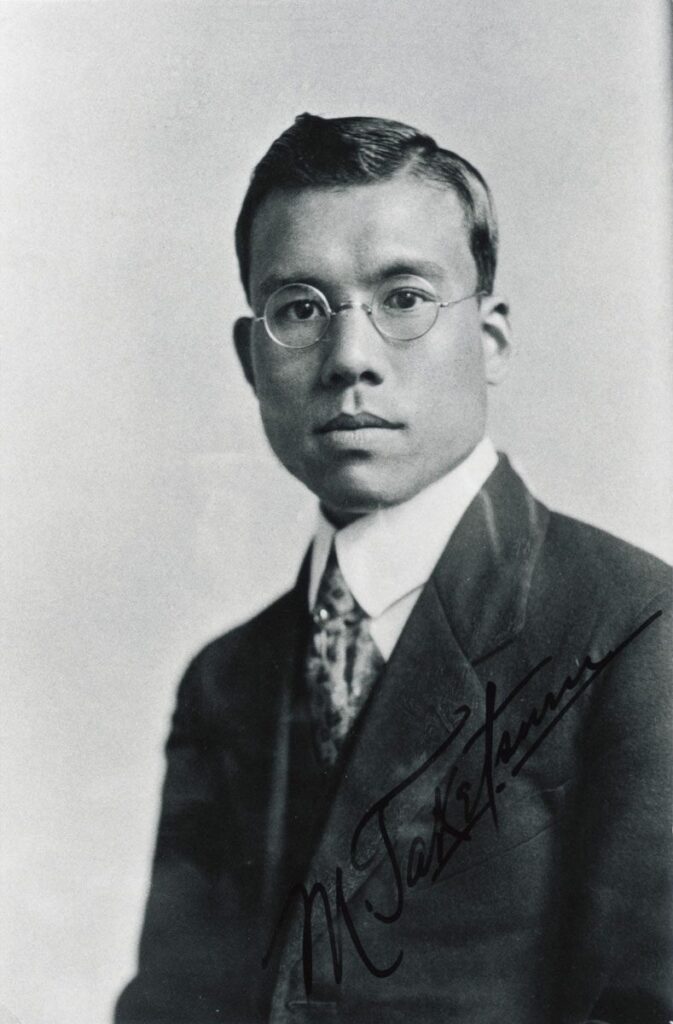
When Torii found him, Masataka Taketsuru was working as a teacher of English and Chemistry. During World War I, he had few opportunities to use his specialized skills. Torii’s offer was perfect timing – here was someone with both the passion and money to create Japanese whisky, and Taketsuru had the knowledge to make it happen.
The Yamazaki Distillery began successful operations in 1923. What’s impressive is that Taketsuru reportedly oversaw everything from designing the pot stills (which had never been made in Japan before) to planning the entire factory layout.
The Birth of Nikka Whisky
By the early 1930s, differences between Taketsuru and Torii began to surface. After completing his initial 10-year commitment, Taketsuru left Suntory in 1933. The following year, he established his own company in Yoichi, Hokkaido, called “Dai Nippon Kaju” (Great Japan Fruit Juice). The name was actually a clever cover – Taketsuru used the pretext of making apple juice from local Yoichi apples to hide his real intention of producing whisky. He built his distillery while appearing to make cider and apple brandy as side products. Before launching his first whisky, he actually did produce apple juice to raise operating funds. This company eventually became Nikka Whisky – with “Nikka” being the Japanese pronunciation of “Nichika,” an abbreviation of the company name (日果).
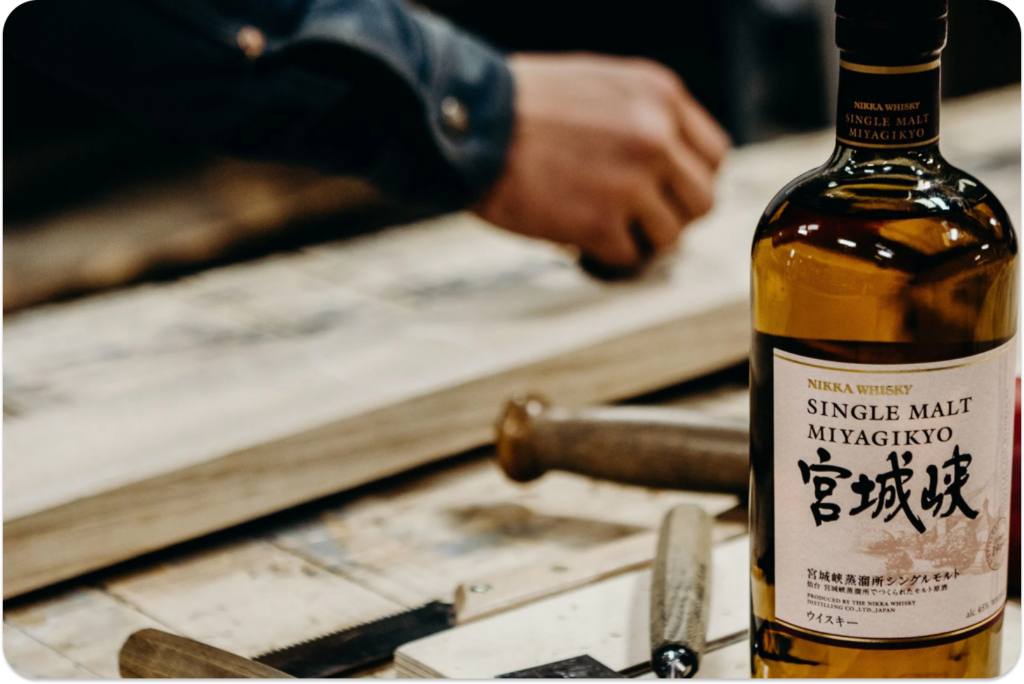
What caused the split between these whisky pioneers? Some say Taketsuru wanted to make traditional Scottish-style whisky, while Torii preferred creating something with broader appeal to Japanese consumers. This might explain why Nikka whisky typically has stronger malt and peat characteristics than Suntory products. Interestingly, even before the Yamazaki project, Taketsuru had wanted to build in Hokkaido because its climate resembles Scotland’s. He only agreed to build near Kyoto because of shipping logistics and Torii’s wish to offer distillery tours to customers.
Nikka grew steadily until a significant ownership change in 1954, when one of the company’s investors sold their shares to Asahi Beer, making Asahi the major shareholder and turning Nikka into its subsidiary.
Meanwhile, after Taketsuru’s departure, Torii kept working toward his vision of a clean, approachable whisky for Japanese tastes. This led to the creation of Kakubin in 1937. After World War II, Kakubin became wildly popular worldwide, establishing Japanese whisky as its own distinctive category. This is how Suntory and the Asahi Group became the two giants of Japanese whisky that dominate the industry today.
Currently Operating Distilleries
Since their beginnings, Suntory and Asahi have dominated Japanese whisky production. However, in the mid-to-late 2000s, new distilleries and brands began to emerge. With the recent Japanese whisky boom, the number of distilleries is growing rapidly, but currently, there are only nine distilleries in commercial production. More than half of these – five distilleries – are still owned by Suntory and Asahi.
The scale difference between these producers is worth noting. Suntory’s global shipment volume ranks around 4th in the world, especially after their acquisition of Jim Beam (Beam Global).
Suntory-Owned Distilleries
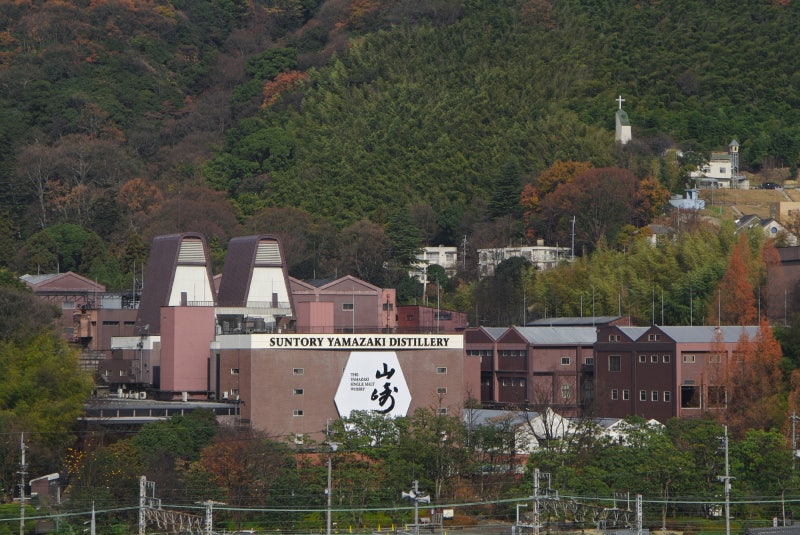
- Yamazaki: Established in 1923, Japan’s first commercial distillery. Founded by Shinjiro Torii in collaboration with Masataka Taketsuru, who later established Nikka Whisky.
- Hakushu: Built in 1973 at an altitude of 700 meters, making it one of the highest-located distilleries in the world.
- Chita: Suntory’s grain whisky distillery. It provides the base for Hibiki and is also sold as Chita (知多) whisky, available only in the Japanese domestic market.
Asahi (formerly Nikka) Owned Distilleries
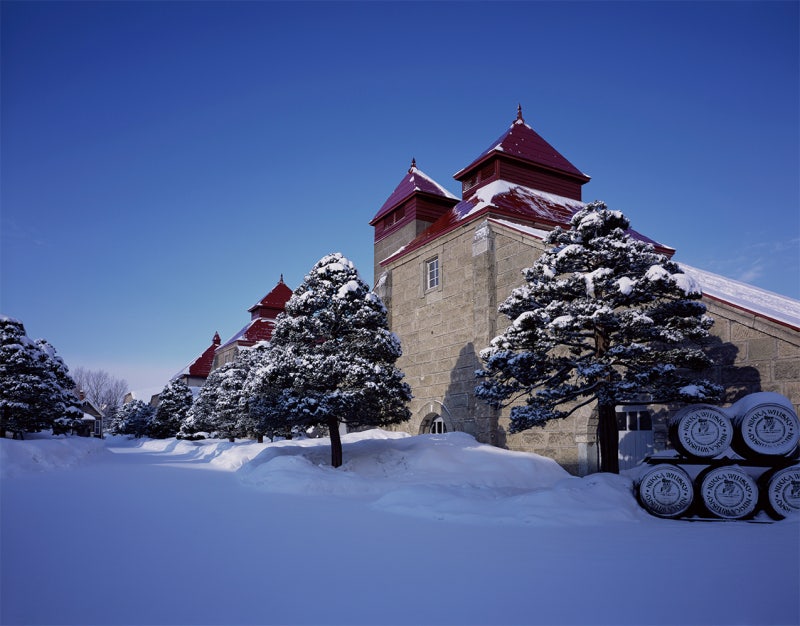
- Yoichi: Established in 1934 by Masataka Taketsuru after leaving Suntory. Built in Hokkaido, which has weather similar to Scotland.
- Miyagikyo: Built in 1969 after a three-year search for the perfect location. Initially called the Sendai Distillery, it was renamed Miyagikyo after the Miyagi Valley, where the Nikawa and Sendai rivers meet.
Other Distilleries
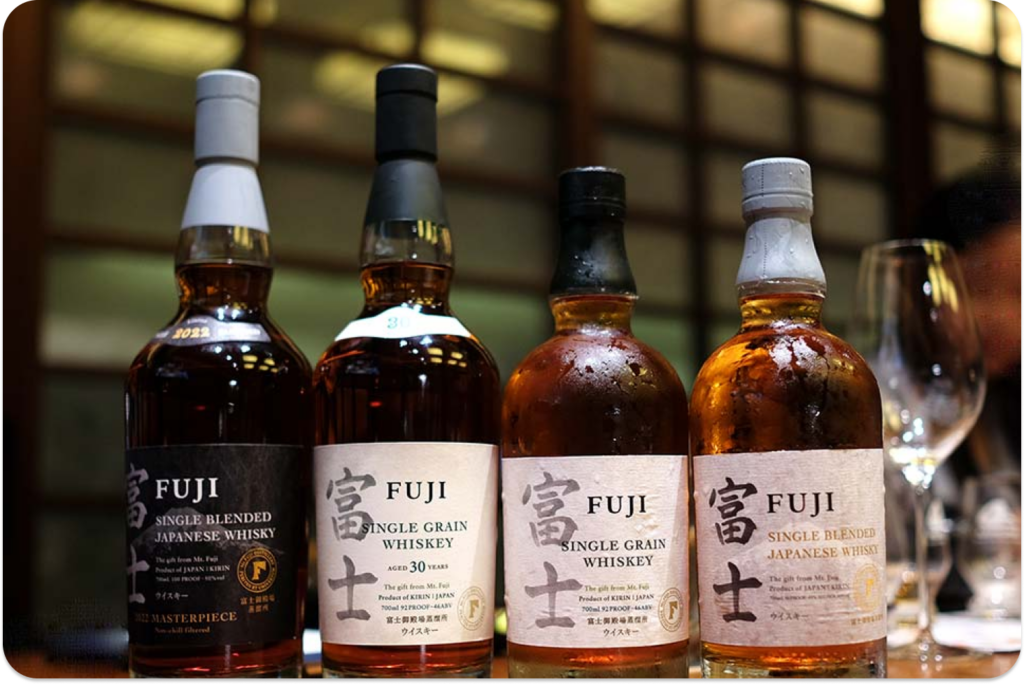
- Fuji Gotemba: Built in 1972 by Kirin, one of Japan’s top three liquor companies alongside Suntory and Asahi. Located at an altitude of 620 meters on Mount Fuji’s slopes, its temperature is only slightly higher than Scottish distilleries, allowing for a lower angel’s share. (If you recall my recent post about Kavalan’s angel’s share, you’ll understand why this location is significant).
- White Oak: A distillery owned by “Eigashima,” a major Japanese liquor company. Produces “Akashi (あかし)” whisky, which isn’t widely known outside Japan.
- Chichibu: A newer distillery established in 2004. Produces the highly regarded “Ichiro’s Whisky.”
- Shinshu: Established in 1985, it paused operations from 1992 to 2011 before resuming production. Creates whisky under the Mars label.
The Future of Japanese Whisky
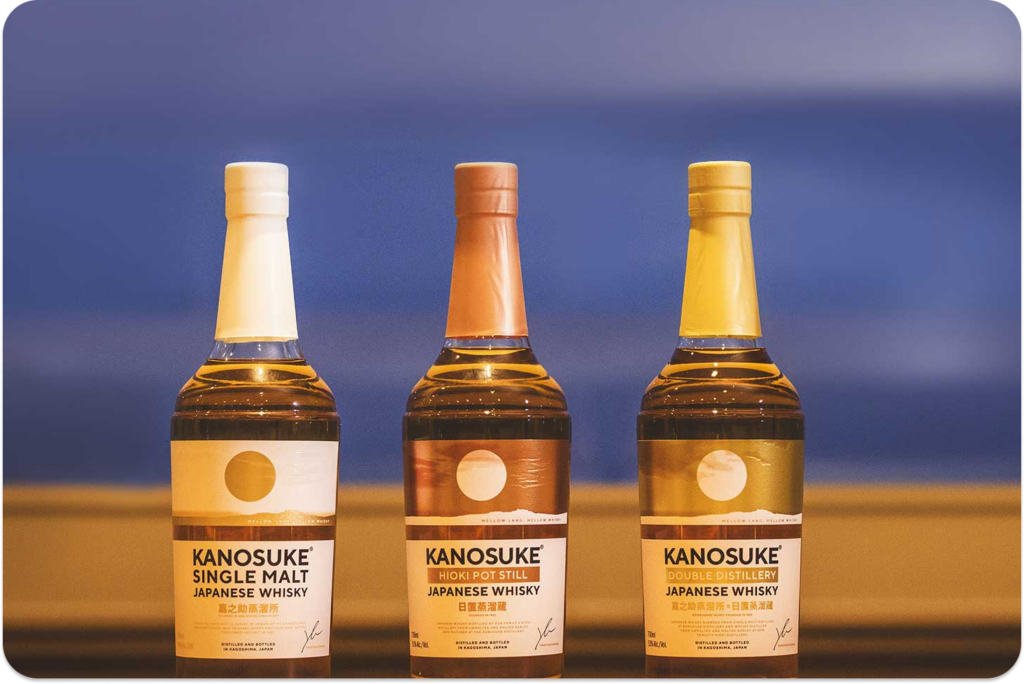
As we’ve seen, Japanese whisky has a rich history built on the passion of visionaries like Torii and Taketsuru. What started with just one distillery has evolved into a globally respected whisky tradition with its own distinct character. The Japanese approach combines Scottish whisky-making techniques with a uniquely Japanese attention to detail and pursuit of harmony in flavor. Today, Japanese whisky continues to gain recognition worldwide, with bottles from Yamazaki, Hakushu, and Yoichi winning international awards and sometimes commanding incredible prices at auction. With new distilleries opening and established producers constantly innovating, the future looks bright for Japanese whisky. I’m excited to explore specific expressions from these distilleries in upcoming reviews, so we can appreciate together what makes each Japanese whisky special.
